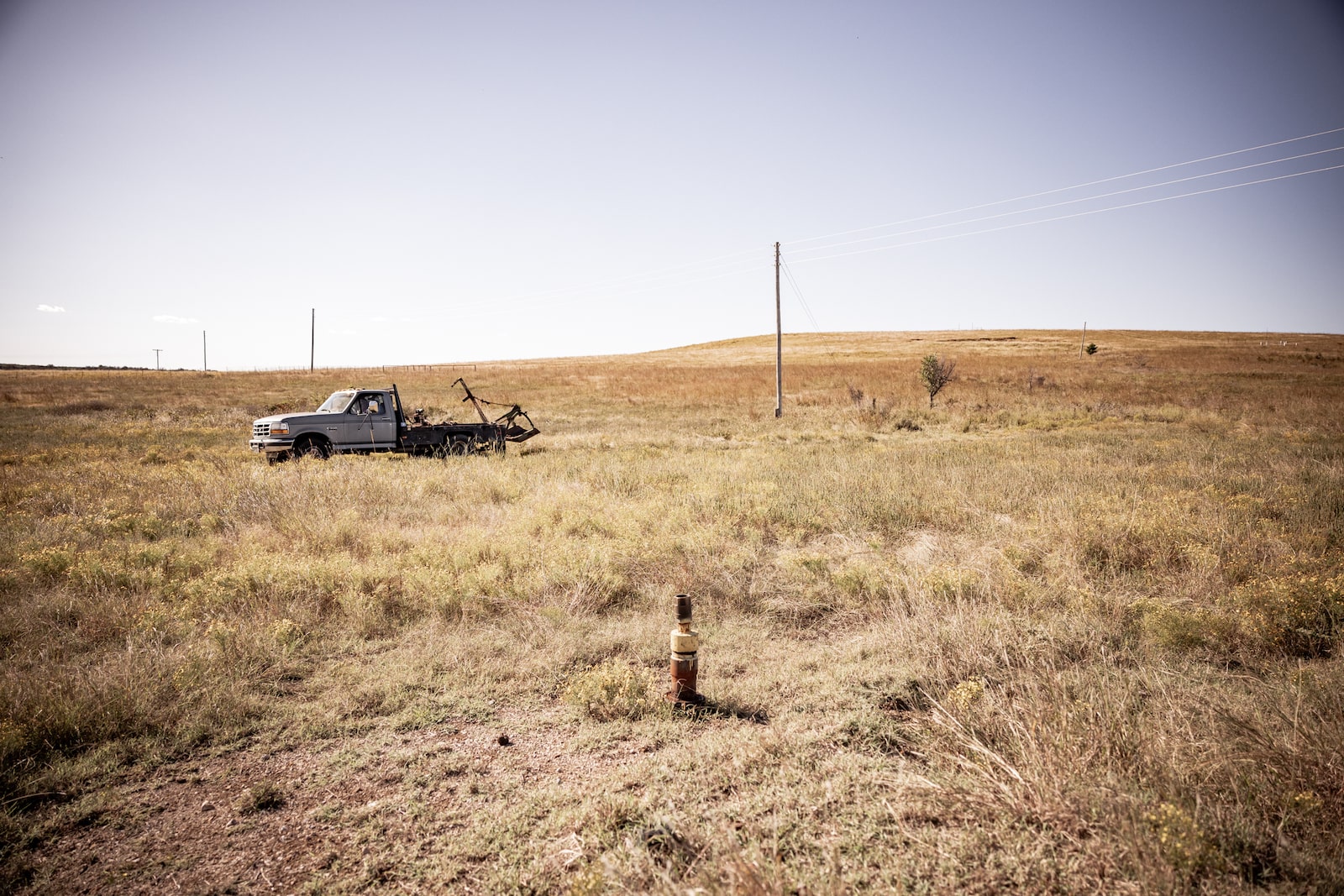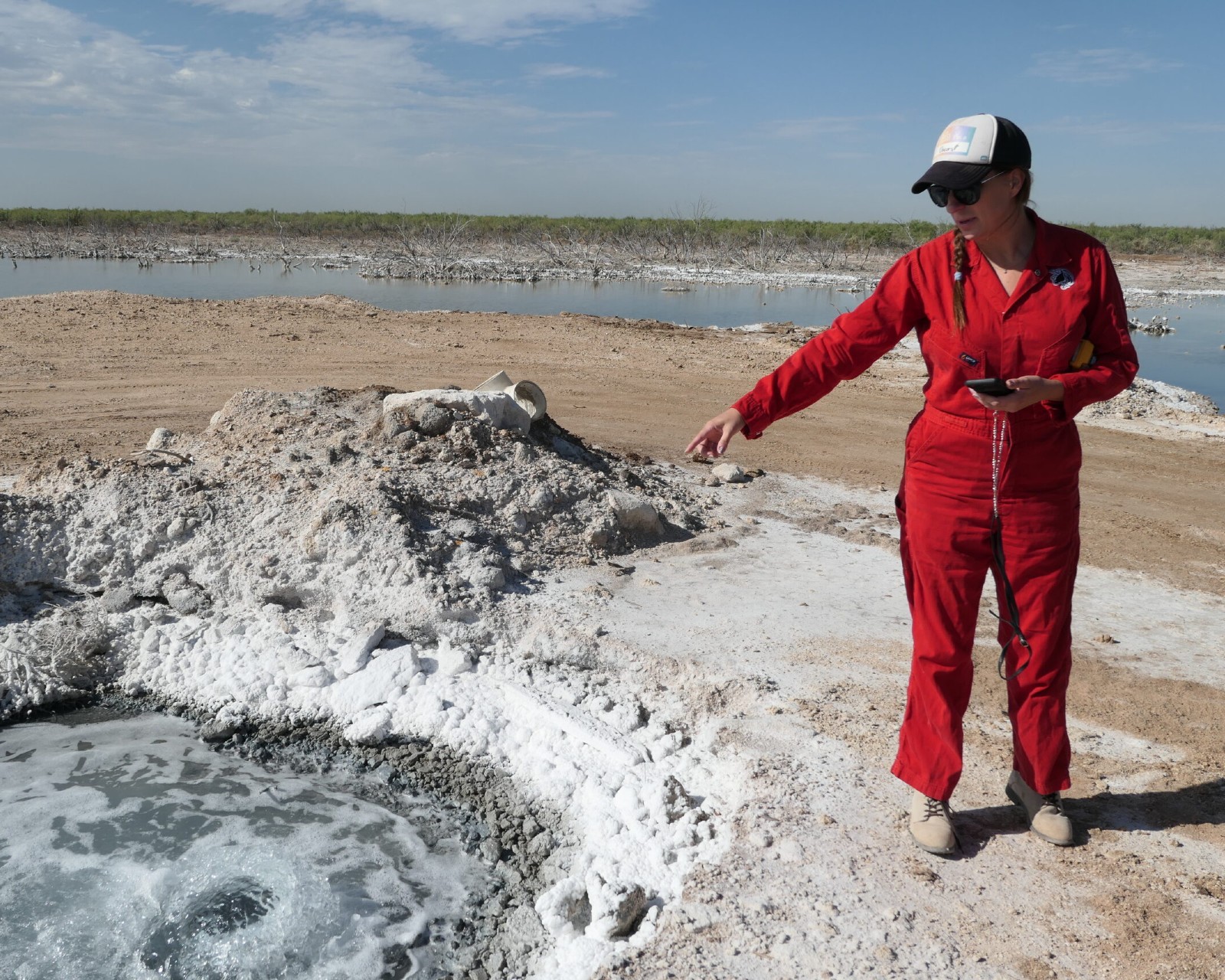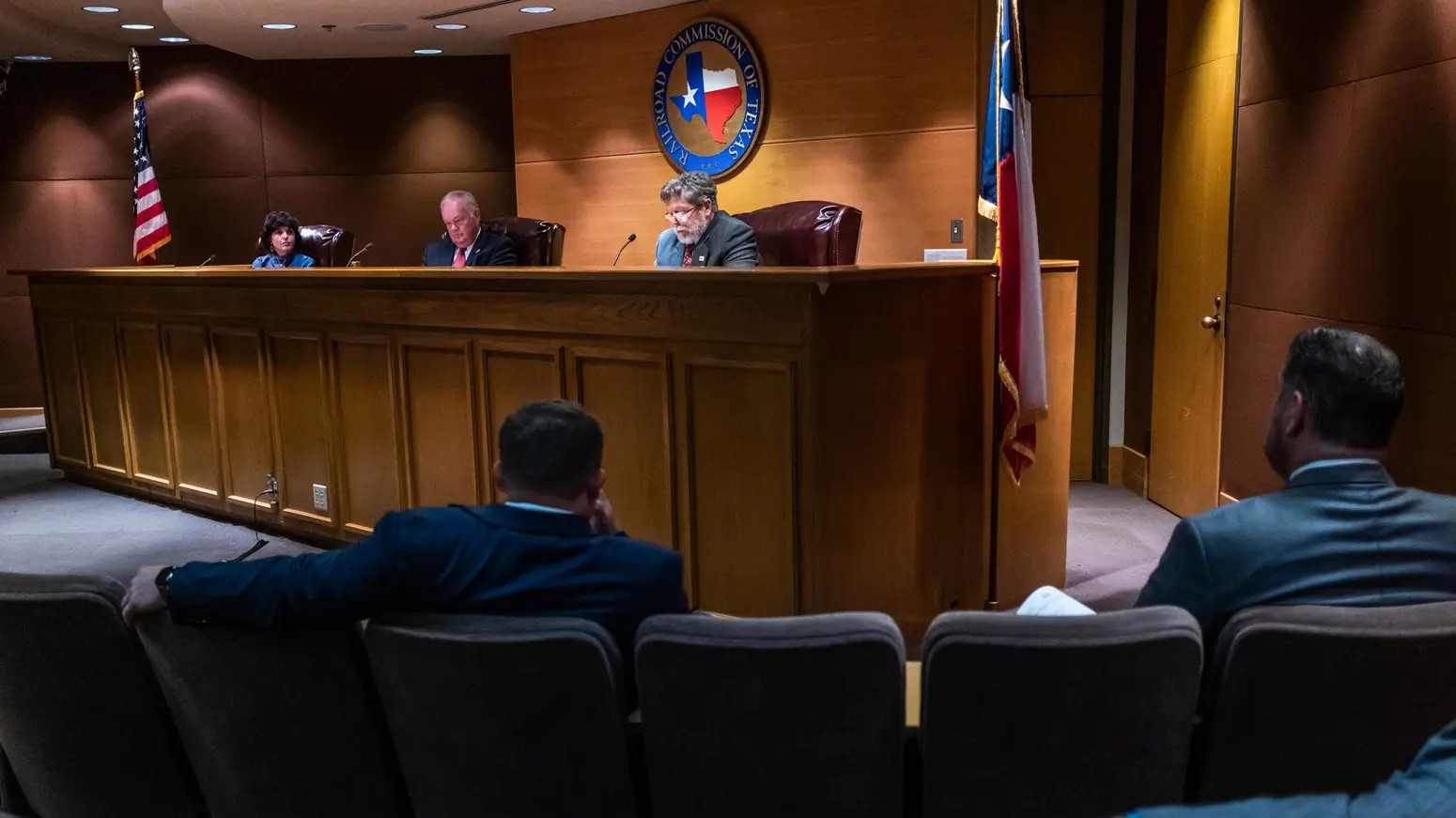
This story was originally published by Capital & Main and was republished with permission.
With the passage of the Bipartisan Infrastructure Law in 2021 and the Inflation Reduction Act last year, Congress and the administration of President Joe Biden made a colossal bet on nascent massive-scale technological solutions to the climate change crisis.
Together, the laws dedicated more than $100 billion to atmospheric carbon reduction, including grants, loans and tax credits for renewable energy projects; hydrogen hubs; electric vehicle fleets; and carbon capture, utilization and sequestration, or CCUS. (Some prefer a simpler phrase: carbon capture, use and storage.)
It’s that last category that has excited politicians in hydrocarbon-rich Texas because it involves cashing in on a new round of federal subsidies to scale up an activity that oil producers have already been doing for a long time: pumping liquefied carbon gas into the ground.
With expanded federal tax credits for CCUS up for grabs, Texas wants to become the “global leader in carbon capture and sequestration,” in the words of state Sen. Kelly Hancock, a Republican who represents Tarrant County. But environmental advocates say the motivation of politicians like Hancock has nothing to do with fighting global warming and everything to do with harnessing federal incentives to drive a boom in industrial growth.
For decades, producers have been injecting liquefied carbon gas and other fluids deep underground in order to re-pressurize aging oil wells. The practice is called secondary recovery, or enhanced oil recovery, which enables a company to squeeze the last drops out of a nearly depleted well — like pumping up a nearly empty Super Soaker. Enhanced oil recovery is the primary “U” in the CCUS acronym. Producers claim that hydrocarbons produced using the technique are “net zero,” based on the controversial assumption that the carbon going into the ground — and, theoretically, remaining trapped there — cancels out whatever carbon emissions result from burning the extracted fuels.
The new federal incentives prioritize CCUS projects that would remove carbon gases from ambient air in an as-yet-unproven process called direct air capture and from major emissions sources, including power plants and industrial facilities, known as point-source capture. In either case, beneficiaries will need to guarantee permanent geological storage of captured carbon, either through enhanced oil recovery or through sequestration in special injection wells bored into saline formations thousands of feet under the Earth’s surface.
The scale of the Biden administration’s investment in CCUS is historic, but federal subsidies for the industry have been around for well over a decade. Congress created the 45Q tax credit in 2008 to spur investment in carbon storage as part of a multipronged effort to combat man-made climate change. Projects eligible for 45Q credits include Class VI wells — the ones used for carbon dioxide injection and permanent geologic storage in deep underground saline formations — and Class II wells used for enhanced oil recovery.
In the first decade of the 45Q program, the CCUS industry struggled to get off the ground. Congress boosted the dollar-per-ton amount of the 45Q credit in 2018, and then, in 2022, the program received a major shot in the arm with the passage of the Inflation Reduction Act. Along with hiking up the value of the 45Q credit, the act drastically lowered eligibility requirements — reducing the volume of captured carbon at a qualifying facility by as much as 96 percent.
Expansion of the 45Q credit and lowering the bar to entry triggered “a bonanza around carbon removal,” according to Tara Righetti, Occidental Chair of Energy and Environmental Policy at the University of Wyoming. The act also gave billions to the Department of Energy to use for loans for CCUS projects and other clean energy initiatives.
“Project developers are clamouring to respond to U.S. Department of Energy Funding Opportunity Announcements, tie up injection rights, and secure injection permits,” Righetti said in a January 2023 blog post. “In response, states have moved forward with efforts to assume regulatory authority for carbon sequestration and secure primacy for Class VI injection wells.”
The main difference between Class VI and Class II injection wells comes down to whether a well is used for permanent geologic carbon sequestration (Class VI) or some other purpose, such as wastewater disposal, enhanced oil recovery or temporary hydrocarbon storage (Class II). Primacy, as Righetti described it, refers to federally delegated regulatory authority over a category of injection wells. Class VI wells fall under the authority of the Safe Drinking Water Act, which is meant to safeguard underground sources of drinking water, and are consequently subject to stricter siting and construction regulations than Class II wells. At present, the Texas Railroad Commission — the state’s oil and gas regulator, which has had no jurisdiction over railroads since 2005 — has primacy over Class II injection wells, but the EPA retains authority over Class VI wells.
Under the IRA’s expansion of 45Q, permanent geologic storage projects qualify for a significantly larger credit ($85 per ton) than utilization projects, including enhanced oil recovery ($60 per ton). Direct air capture projects, which remove ambient CO2 directly from the atmosphere, can receive $180 per ton for geologically stored CO2 and $130 per ton for captured and utilized CO2. In order to unlock the highest tiers of 45Q credits for permanent geologic storage and for direct air capture projects, Texas-based operators will need to drill many Class VI wells. But there’s a snag: The commission may still be years away from securing Class VI primacy, and the EPA’s own Class VI permitting timelines are glacial.
Nationwide, the EPA has approved just two Class VI facilities since the program began in 2010, and there are currently 109 applications in the backlog. Only two states, Wyoming and North Dakota, have secured Class VI primacy from the EPA. (Louisiana may receive primacy by the end of 2023.) That means the most remunerative tiers of the 45Q program are essentially blocked off by regulatory red tape. At present, any company that wants to build a Class VI facility in Texas faces a potentially yearslong federal permitting process.
Betting on the future boom in carbon capture projects, and eager to shorten permitting timelines, Texas is pressing ahead with its application to regulate Class VI wells by itself. The Railroad Commission has finished the pre-application phase for Class VI primacy and is awaiting EPA review before moving on to the formal application phase. “We hope our program will be able to streamline the process and allow for the timely issuing of Class VI permits,” Railroad Commission chief geologist Leslie Savage said in a July hearing.
Environmental advocates say the commission has not been a responsible regulator of the Class II program and should not be trusted with Class VI primacy. “If anybody is going to be permitting this kind of activity, it ought to be the EPA, and it’s OK if the EPA is moving slowly,” said Virginia Palacios, executive director of Commission Shift, in a recent webinar about carbon capture. Commission Shift is a Laredo, Texas-based watchdog organization focused on reforming the Railroad Commission.
All of the 45Q tiers are intended to mitigate climate change. But in hearings about CCUS-related bills in the 2023 legislative session, politicians like Hancock “did not talk about climate change,” Palacios said. “They did not talk about the need for us to address extreme weather as a result of climate change, or biodiversity loss, or impacts on low income communities on the coast,” she said. “They talked about wanting to be able to compete and sell gas to Europe and make lots of money. Many of them talked about trying to make sure that CO2 never gets regulated as a pollutant and that there’s never a limit on CO2.”
It is a Texas-sized irony that billions in federal funds earmarked for fighting climate change may end up going to the same oil and gas companies whose future depends on the survival of a carbon-intensive global economy. Those funds stand to benefit a state with a governor, Greg Abbott, who refuses to use the phrase “climate change,” and with an oil and gas regulatory agency run by elected commissioners whose campaign coffers are stuffed with industry money, who have flirted with climate change denial and who have threatened to sue the federal government over attempts to regulate methane.
But for all their hostility to climate mitigation, greenhouse gas regulation, and environmental, social, and governance (ESG) policies at home, these powerful Texas politicians know that certain image adjustments will be necessary for the industry to remain attractive to climate-conscious investors and foreign customers with increasingly strict clean energy policies.
The potential for explosive growth in the CCUS sector — fueled by federal incentives — could be the silver bullet they’ve been looking for: Expanding the CCUS sector to include enhanced oil recovery, which will help companies market their products as “net zero.”
There are at least two potential growth markets in CCUS that have politicians and industry players seeing dollar signs. The first is point-source carbon capture, which involves an industrial facility — a coal-burning power plant, for example — scrubbing a certain percentage of carbon directly from its stacks. The second is direct air capture, an unproven massive-scale technology that involves pulling ambient carbon from the atmosphere. In both cases, the captured carbon could be stored permanently underground or transported by truck or pipeline to another facility for storage or use in enhanced oil recovery or another industrial application. Environmentalists fear that companies could use 45Q credits to refine new and potentially lucrative technology, greenwash their images, and increase their profit margins at taxpayer expense, all without scaling back hydrocarbon production.
The projected size of the future CCUS market is enormous. Houston-based Occidental Petroleum, which is currently pursuing two DAC projects in Texas under a subsidiary called 1PointFive, estimates the CCUS industry will grow to $50 billion a year by 2030; ExxonMobil puts the figure at $4 trillion by 2050. As the nation’s largest oil and gas producers, Texas fossil fuel companies are well-positioned to tap into the windfall of 45Q credits delivered by the Inflation Reduction Act. There are already tens of thousands of Class II wells in the state, and the reduced barrier to entry will make 45Q a lifeline to smaller companies that might want to use enhanced oil recovery to prolong the viability of their currently producing wells.
As a map produced by Rice University’s Baker Institute shows, the deep underground geology of Texas is ideal for carbon storage, with saline aquifer and salt dome formations stretching across the Permian Basin from the Panhandle to the Mexican border and all the way down the Texas-Louisiana border, along the Gulf of Mexico and clear across the Eagle Ford Shale formation to the Rio Grande Valley. Oil and gas companies have already been injecting CO2 and fluids into smaller Class II wells for enhanced oil recovery and waste disposal in Texas for decades — and it’s the Railroad Commission’s light touch with regard to holding companies accountable for leaks, spills, and earthquakes related to those Class II wells that has environmentalists worried.
Commission Shift has published extensive reporting on the commission’s failure to adequately address the state’s constantly swelling list of orphaned, abandoned and inactive oil and gas wells, some of which are leaking vast quantities of contaminated water onto the surface or into adjacent groundwater reservoirs. The Environmental Defense Fund and Earthworks have repeatedly reported on the agency’s deficient approach to wasteful methane venting and flaring, despite having rules about when flaring is permissible and when it isn’t.
Palacios also expressed concern about commissioners’ recent approval of permits for new injection wells over the recommendations of staffers charged with carrying out technical review of the applications. Commission examiners had found that Oklahoma City-based company Lagoon Water Management, which was seeking approval to drill Class II waste disposal wells in Dawson County, “failed to prove the Proposed Disposal Wells are in the public interest,” because, according to the review, there was already sufficient disposal capacity in the area. Piñon Operating, an oil and gas producer with active wells in the same area where Lagoon wanted to put its wells, protested Lagoon’s applications on the grounds that additional disposal capacity was not needed, and that overpressurizing the affected formation could lead to migrations of fluids and hydrogen sulfide gas that could “cause higher drilling costs, loss of well bores, and ultimately, wasted oil and gas reserves.”
At a September 14 hearing, following a motion from Commissioner Wayne Christian, the commissioners rejected the examiners’ recommendations and approved Lagoon’s applications. Piñon Operating has filed a motion for a rehearing.
Asked for comment on the Lagoon permits, a spokesperson told Capital & Main that the commission “cannot comment on cases that are pending a final decision.”
Palacios said the commissioners’ decision to override the agency’s own examiners is something the EPA should take into consideration as it evaluates the state’s Class VI primacy application. “The EPA needs to understand that even if RRC’s technical staff seems like it will understand and seek to follow the Class VI CO2 injection well precautions,” Palacios said, “we have evidence that the railroad commissioners will disregard those recommendations and put Texas drinking water at risk.”
This story was originally published by Grist with the headline Texas sees ‘bonanza’ in carbon storage market on Nov 11, 2023.




